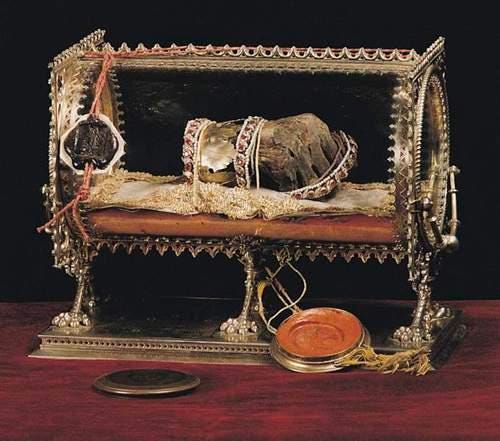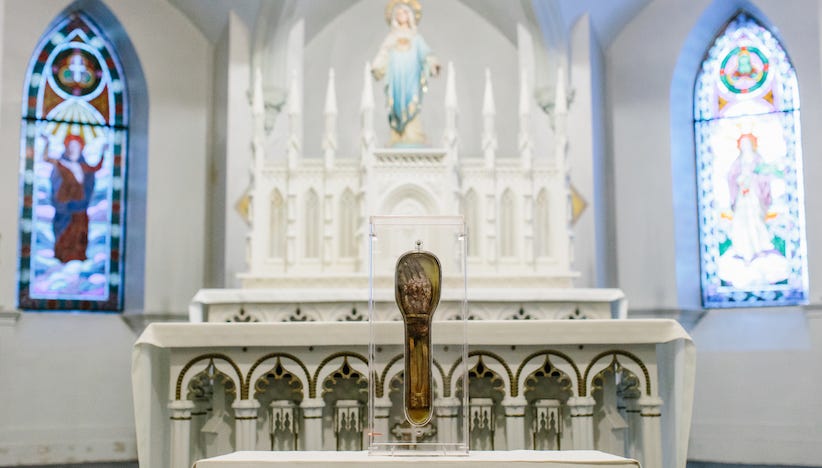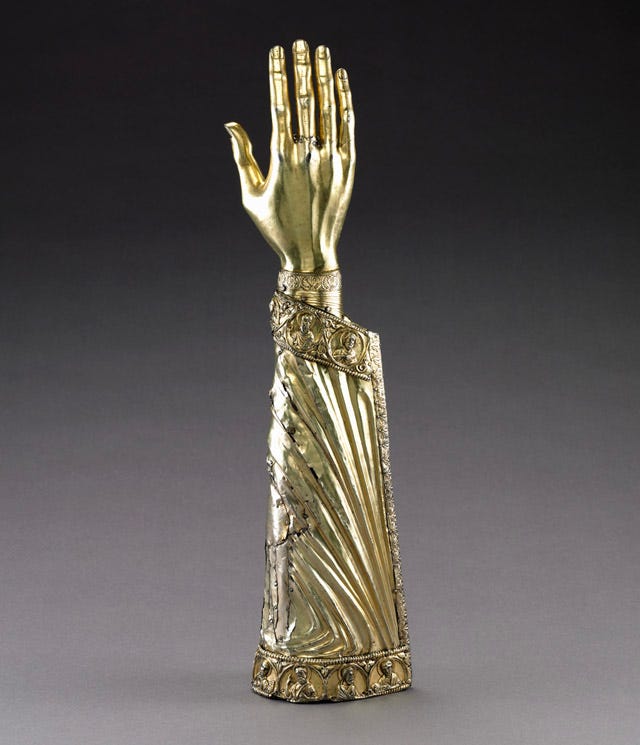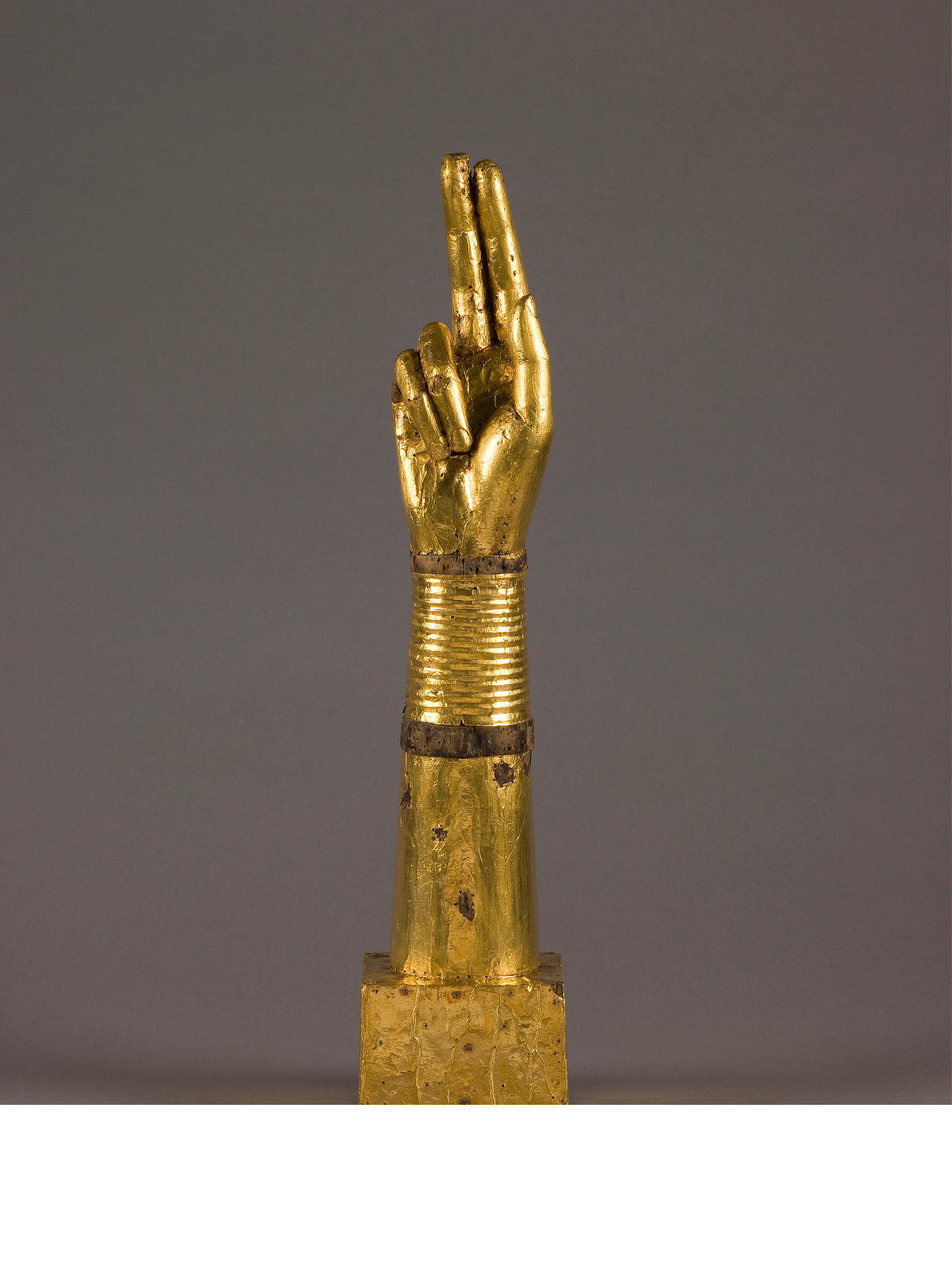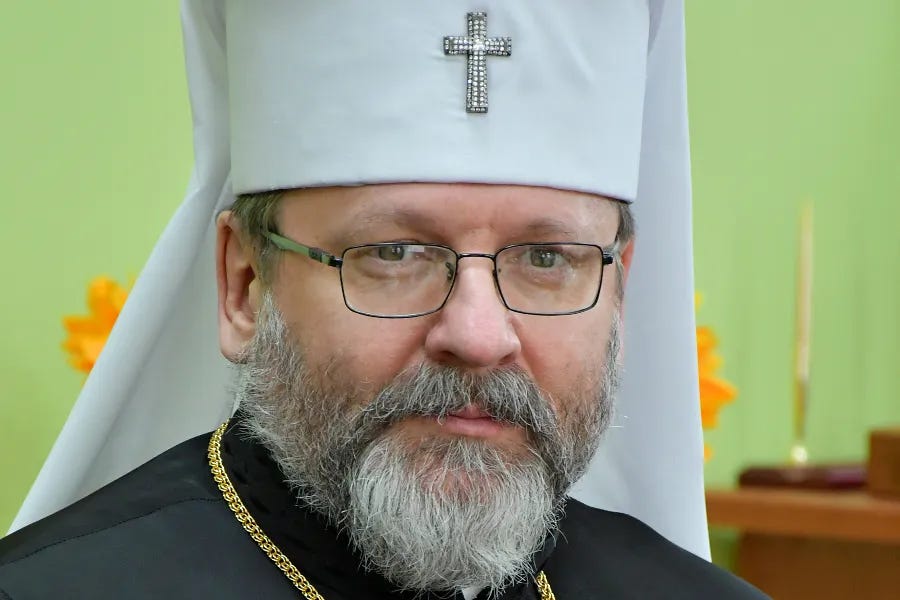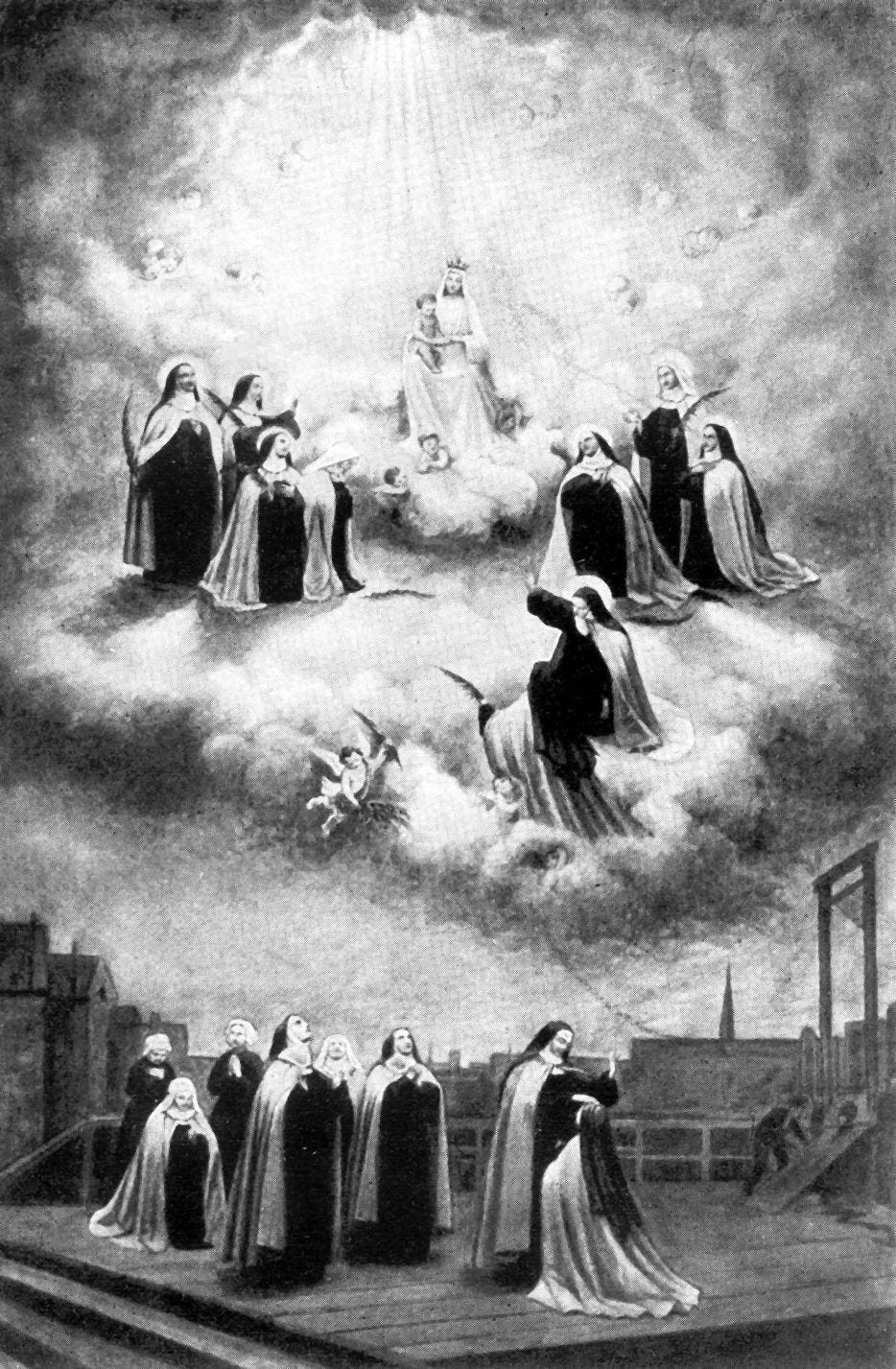Pope Francis on Friday began on Friday a three-day apostolic journey to Hungary, where the pontiff will meet with civil and ecclesiastical leaders, with disabled children, with the poor, and with his fellow Jesuits.
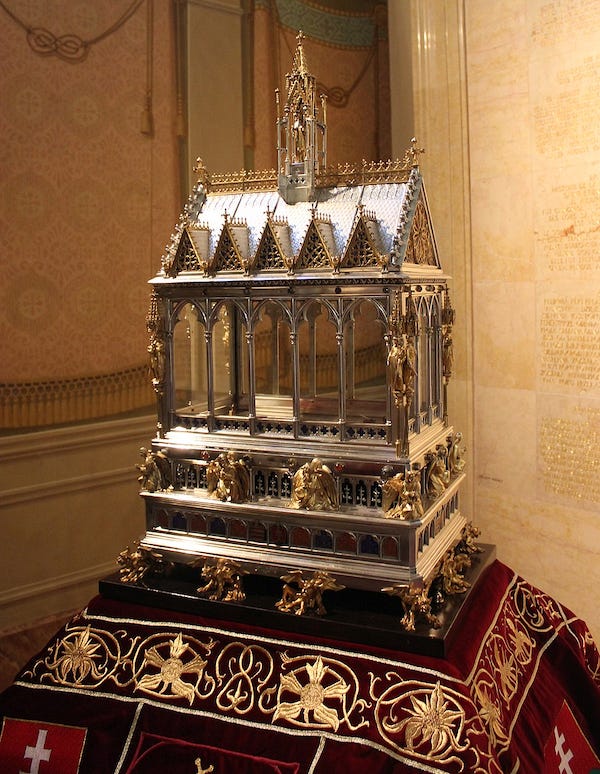
Among the pope’s stops in the country will be Budapest’s St. Stephen’s Cathedral, where the pontiff will likely have the opportunity to venerate a relic some 1,000 years old: the right hand of St. Stephen, the first king of Hungary.
To observe that occasion, The Pillar brings you a handful of holy arms, hands and fingers — the limbs and appendages of the Church’s holy men and women.
You’ve gotta hand it to us, this list is an armful.

‘The Holy Right’
The first Hungarian king was born sometime around 975, became king in the year 1000 or 1001, and died in 1038.
Stephen became Hungary’s grand prince when his father died in 997, and Hungary was recognized as a kingdom by Pope Sylvester II in the year 1000 — the pope sent Grand Prince Stephen a crown, to recognize him as king, in that year.
Stephen, who unified the Carpathian Basin of Eastern Europe by a series of wars, urged the spread of the Christian faith throughout the region — he himself had become a Christian shortly before he became Hungary’s ruler — and saw to it the Church was well established in Hungary.
King Stephen’s work to see Christianity established across Hungary led him to be remembered as the father of a Christian nation.
He was was canonized in 1083, some 45 years after his death, and his body was at that time exhumed from his crypt. Stephen’s right arm was reportedly not withered or decayed, and his arm was removed from his body to be venerated as a holy relic.
From there, the relic moved around a little bit. It was for a while stolen from a Hungarian basilica, and kept hidden in a village in present-day Romania. When it was found, a shrine was built at the hiding place.
At some point in history, Stephen’s hand was separated from the arm above it. In the 14th century, by some accounts, Stephen’s upper arm was sent to Poland, and his lower arm to Vienna. When Hungary was invaded, the hand was safeguarded by Dominicans in Dubrovnik.
The hand itself spent some time in Vienna in the 18th century, and then was sent to Hungary. During World War II, the hand was sent back to Vienna, for safekeeping, and was returned to Budapest after the war ended.
Because St. Stephen is venerated as the father of the Hungarian people, his relics play an important role in the faith of the Church in Hungary. After 1989, when communism fell in the Hungary, the hand, known in Hungary as the “Holy Right” has been part of annual processions in Budapest.
Francis Xavier’s baptizing arm
St. Francis Xavier, among the founding members of the Society of Jesus, was ordained a priest in 1537, and in 1541, departed to India as both a missionary, and as a papal nuncio — a formal emissary from the Apostolic See.
As first, Xavier ministered to Portuguese people living in India’s Goa region, but he soon began teaching and serving Indians living along the country’s coast. He built some 40 churches, before in 1549, he went as missionary to Japan.
Xavier received into the Church some converts in Japan, but Christianity was not well received there, especially by the country’s ruling class. Soon, it became the subject of persecution. Xavier returned briefly to India, before trying in 1552 to enter China as a missionary. He died of sickness in December 1552, as he waited for a ship to take him to India.
He was revered as a saint, especially in Goa, almost immediately after his death. And some 62 years after Xavier’s death, his right arm — with which he had blessed and baptized thousands of people in Asia — was noticed to be partially incorrupt. It was detached from his body, and has been venerated as a relic since, kept mainly at the Gesu, the Society of Jesus’ principal church, in Rome.
In 2017 and 2018, the arm made a 14-city tour of Canada, where it was venerated by thousands.
St. Basil’s hands
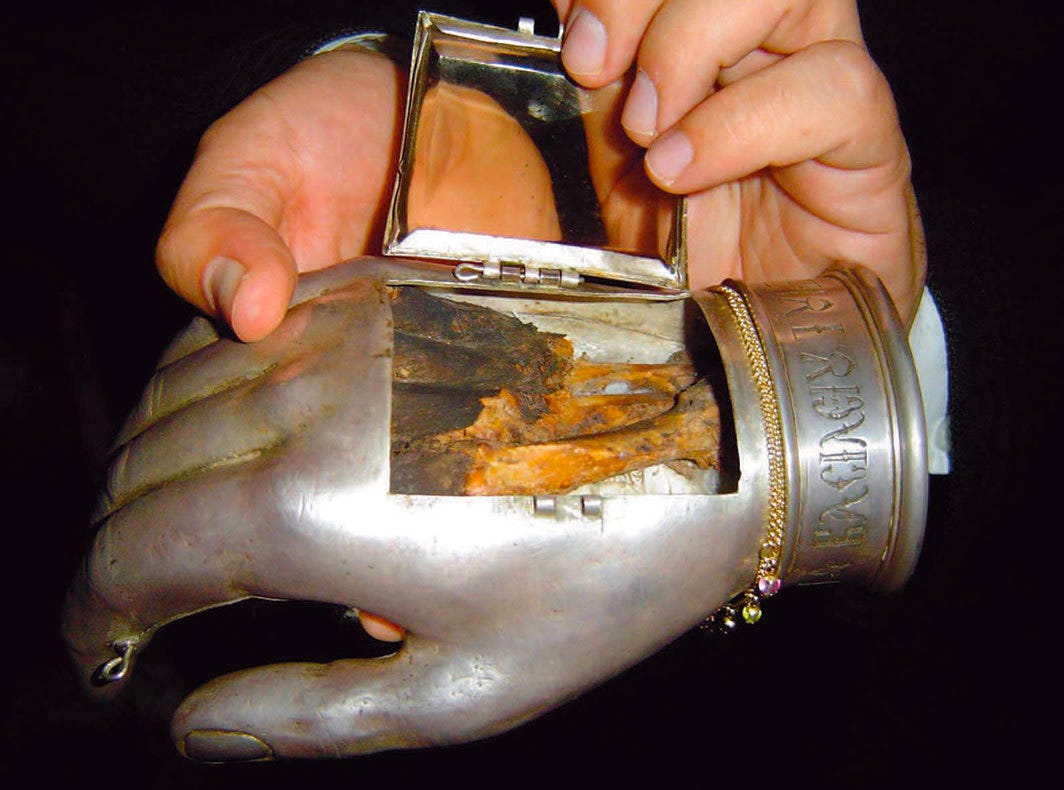
St. Basil the Great — just called Basil in his lifetime — was a fourth-century bishop in Caesarea Mazaca, in modern-day Turkey. He was a significant Church Father because of his opposition to Arianism, but also for his important leadership of monastic life in the early Church, and his love for the poor.
He is recognized as a Doctor of the Church, and as a “Great Hierarch” in Eastern Orthodox Churches.
Basil, in short, had his hands in a lot of different things during his lifetime. It’s no different in his death.
Relics of St. Basil are venerated around the world, including his head at an important Orthodox monastery at Mt. Athos, in Greece.
But parts of his right hand are kept at the Church of St. George of the Greeks in Venice, in an unusual reliquary which looks like a slightly-larger-than-life hand.
Other parts of the same hand are at a monastery on Mt. Athos — a different monastery than the one with Basil’s head.
His right arm is reserved in Athens, and his left hand, or parts of it, are at an Orthodox church in New Philadelphia, Greece.

Hands of the unknown saints
In medieval Europe, reliquaries shaped like hands became quite popular in some churches. Liturgical theologians say they would be used to extend blessings over pilgrims, and were evocative of the power of baptism — the idea was often that the holy water used in baptism was likely to preserve a hand from corruption.
Some reliquaries, like this one, which now lives in the Cleveland Museum of Art, contain within them entire arms of unknown saints.
Others, like these now in the Kimbell Art Museum in Texas, and the St. Louis Museum of Art, contain —or once contained — only bone fragments:
St. Thomas’ finger
St. Thomas the Apostle, tradition holds, journeyed to India after Pentecost, where he evangelized the people of the Indian continent, and is still venerated as a patron saint.
One tradition says that St. Thomas’ bones were brought to India in the third century, and in the 1200s, to Italy.
In the Roman basilica of Santa Croce, bones from the index finger of St. Thomas the Apostle have been venerated for centuries. According to tradition, the bones are from the finger which St. Thomas placed into the wounds of Christ:

